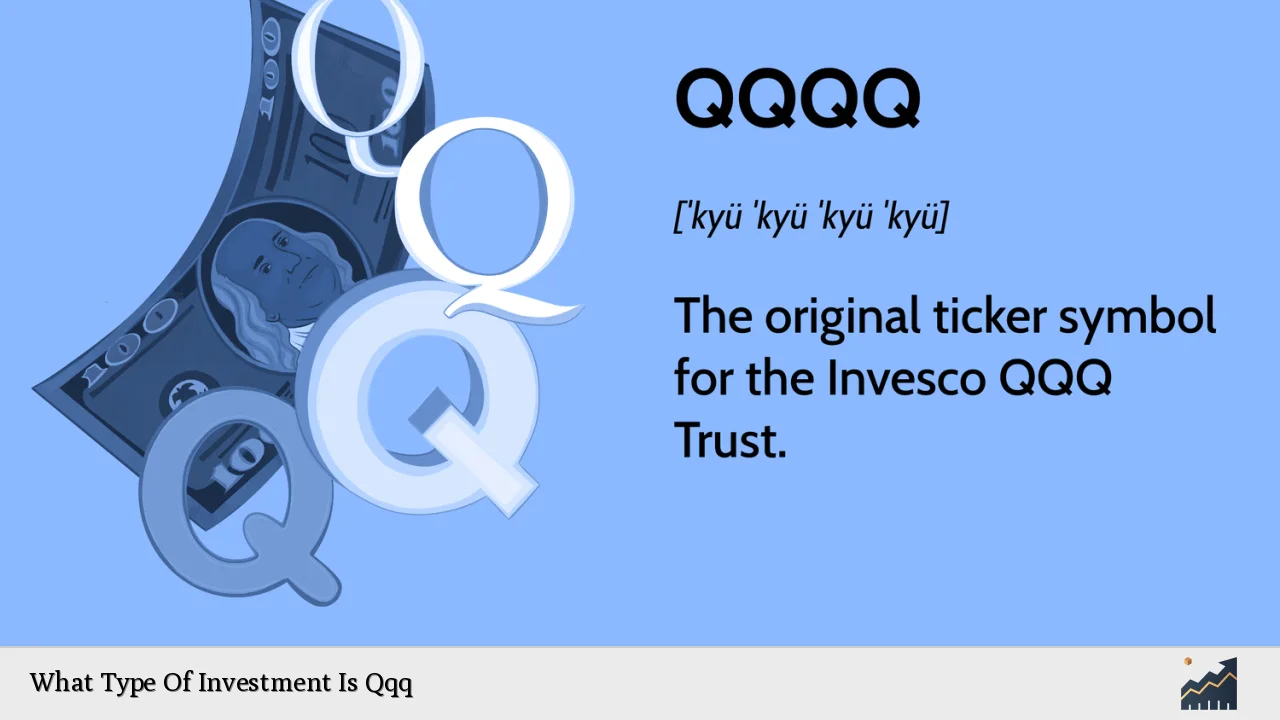The Invesco QQQ Trust, commonly referred to as QQQ, is an exchange-traded fund (ETF) that tracks the performance of the Nasdaq-100 Index. This index comprises 100 of the largest non-financial companies listed on the Nasdaq stock exchange, primarily focusing on the technology sector. The QQQ ETF allows investors to gain exposure to a diversified portfolio of large-cap growth stocks without having to buy individual shares of each company.
Investing in QQQ is particularly appealing for those looking to capitalize on the growth potential of major tech companies such as Apple, Microsoft, and Amazon. With its inception in 1999, QQQ has become one of the most popular ETFs in the market due to its strong historical performance and liquidity. Investors can trade QQQ like a stock throughout the day, making it a flexible option for both long-term investors and short-term traders.
| Feature | Description |
|---|---|
| Type | Exchange-Traded Fund (ETF) |
| Tracks | Nasdaq-100 Index |
| Inception Year | 1999 |
| Focus | Large-cap non-financial companies |
Understanding QQQ’s Structure
The structure of QQQ is designed to provide investors with a straightforward way to invest in a basket of stocks that represent a significant portion of the Nasdaq market. As a passively managed ETF, it aims to replicate the performance of the Nasdaq-100 Index by holding all or most of its constituent stocks. This approach allows for broad market exposure while minimizing individual stock risk.
Composition of QQQ
The Nasdaq-100 Index includes companies from various sectors, but it is heavily weighted towards technology. As of recent reports, some of the top holdings in QQQ include:
- Microsoft Corp
- Apple Inc
- NVIDIA Corp
- Amazon.com Inc
- Meta Platforms Inc
This concentration in technology means that QQQ can be more volatile than other broad-market ETFs, such as those tracking the S&P 500. However, it also offers higher growth potential during bull markets.
Investment Strategy
Investors typically use QQQ as a core holding in their portfolios due to its potential for long-term capital appreciation. By investing in QQQ, individuals can benefit from the growth trends in technology and other innovative sectors without needing to pick individual stocks.
Furthermore, QQQ has a relatively low expense ratio compared to mutual funds, making it a cost-effective investment option. Its average daily trading volume also ensures high liquidity, allowing investors to buy and sell shares with ease.
Pros and Cons of Investing in QQQ
Investing in QQQ comes with several advantages and disadvantages that potential investors should carefully consider.
Advantages
- Diversification: By investing in QQQ, you gain exposure to a wide range of companies within the Nasdaq-100 Index.
- Growth Potential: The ETF is heavily weighted towards technology and growth stocks, which have historically outperformed other sectors.
- Liquidity: With high trading volumes, investors can easily enter and exit positions without significant price impact.
- Low Expense Ratio: Compared to actively managed funds, QQQ offers a lower cost structure for investors.
Disadvantages
- Sector Concentration: The heavy focus on technology means that downturns in this sector can lead to significant losses.
- Volatility: The ETF may experience larger price swings compared to more diversified funds like those tracking the S&P 500.
- No Small-Cap Exposure: Since it only includes large-cap stocks, investors miss out on potential gains from smaller companies that may grow rapidly.
How to Invest in QQQ
Investing in QQQ is straightforward and can be done through various online brokerage platforms. Here are some steps to consider when investing:
1. Choose a Brokerage: Select an online broker that offers access to ETFs. Popular options include Robinhood, E*TRADE, and Charles Schwab.
2. Open an Account: Create an account with your chosen brokerage and complete any necessary verification processes.
3. Fund Your Account: Deposit funds into your brokerage account to prepare for purchasing shares of QQQ.
4. Place an Order: Search for the ticker symbol “QQQ” and decide how many shares you want to buy. You can place a market order or set a limit order based on your investment strategy.
5. Monitor Your Investment: After purchasing shares, regularly review your investment’s performance and consider your long-term goals.
Performance Analysis
Historically, QQQ has outperformed many other investment vehicles over extended periods due to its focus on high-growth technology companies. For instance, over the past decade, it has delivered average annual returns significantly higher than those of traditional equity benchmarks like the S&P 500.
While past performance does not guarantee future results, many investors view QQQ as a reliable option for gaining exposure to some of the most innovative companies shaping today’s economy.
FAQs About QQQ
FAQs About What Type Of Investment Is Qqq
- What is QQQ?
QQQ is an exchange-traded fund that tracks the Nasdaq-100 Index. - What sectors does QQQ invest in?
QQQ primarily invests in technology but also includes consumer discretionary and healthcare sectors. - How do I buy shares of QQQ?
You can buy shares through any brokerage platform by searching for its ticker symbol “QQQ.” - Is investing in QQQ risky?
While it offers growth potential, investing in QQQ carries risks due to its concentration in tech stocks. - What are the fees associated with investing in QQQ?
The expense ratio for QQQ is relatively low at around 0.20%.
Conclusion
In summary, Invesco’s QQQ ETF represents a compelling investment opportunity for those seeking exposure to large-cap technology and growth stocks within the Nasdaq-100 Index. Its structure as an ETF allows for easy trading and diversification across multiple sectors while maintaining a focus on high-growth potential.
However, investors must remain aware of the inherent risks associated with sector concentration and volatility. By understanding these factors and employing sound investment strategies, individuals can effectively incorporate QQQ into their portfolios for long-term growth potential.

